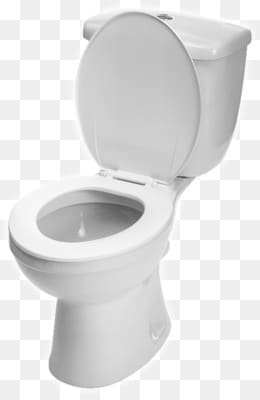Maintaining clog-free toilets is not always easy and chances are you have unclogged a toilet on multiple occasions, maybe at rather inopportune moments.
In addition to the mess, a toilet that clogs or overflows frequently can cause lasting damage to floor coverings, sub-floors, plumbing infrastructure and even the ceiling below. In addition, any moisture that remains after the cleanup can result in unhealthy mildew and mold growth long after the mess has been cleaned up.
So, how can you fix this issue? Check out our tips below to learn about how maintaining clog-free toilets can be beneficial to homeowners.
The Cost of a Poorly Maintained Toilet
With the number of home toilets rapidly growing, the cost of damage from clogged or overflowing toilets also rises exponentially.
Clogged or overflowing toilets can result in the following situations:
Replacement / Repair costs to flooring, subflooring, walls and trim materials
Replacement / Repair costs to plumbing pipes and fixtures
Repairs to drain and sewer lines
Possible mold remediation from frequent or latent water infiltration
Higher water bills when toilets are not operating correctly and must be flushed multiple times to move waste through the system
There is good news. The homeowners can avoid these types of damage to their homes with these simple tips designed to help keep home toilets functioning properly.
1. The Do’s and Do Not’s of Maintaining Clog-Free Toilets
Many clogged toilets are caused each year due to improper use. In most of these cases, family members, attempt to flush materials down the toilet that should not be introduced into any type of sewage disposal system. These materials include common household items, such as:
Paper products – including cleaning wipes, feminine hygiene products, cotton balls and swabs, cigarette butts, paper toweling, facial tissues, diaper liners and even excessive amounts of toilet tissue
Miscellaneous household waste products – including kitty litter, human or pet hair, grease, oils, dental floss, ashes, potting soil and dust and dirt from vacuums or dust pans
Other objects or materials – including children’s toys, small articles of clothing like socks, medications, pet food, potting soil, sand, gravel or other miscellaneous materials or objects
2. Use the Waste Bins
A great way to prevent inappropriate objects and materials from being placed into the toilet is to provide an alternate disposal option for family members and guests who use your bathroom. To do this, place a small trash can near each toilet in the home. Doing this is an economical, effective way of preventing future toilet clogs.
3. Keep the Counters Clean of Junk
Many clogged toilets also result from accidents where an object is knocked into the toilet accidentally. This often happens when nearby counters or over-the-toilet shelving is filled with small objects, such as jars, bottles, sponges, and cosmetics. When these objects land in the toilet and are flushed accidentally, a clog will occur. Keeping these areas clear of small items will lessen the chances of this happening.
4. The Double Tap: Flushing Twice
If the toilet has a large amount of waste or toilet paper in it, flushing twice may be necessary to completely empty the bowl. But a toilet that always needs to be flushed multiple times probably already suffers from some type of clog or plumbing problem.
If a toilet in your home needs to be flushed multiple times, the extra water usage is placing an additional burden on both your plumbing system and the family water bill. When this problem occurs homeowners may want to prevent excessive water bills and further damage to their plumbing by having the problem diagnosed and repaired by a professional.
5. “Use the Plunger, Luke.”
Another cause of clogged toilets and the damage that results is ignoring or postponing obvious signs that the toilet is malfunctioning. Even when the toilet does empty by flushing it multiple times, flushing over and over is not healthy for the plumbing system.
Homeowners who experience slow flushing action may be able to relieve the problem by using a plunger to help free the clog and push it through the pipes. To do this, follow these steps:
Insert the plunger into the toilet bowl, tipping it to allow any trapped air in the bell of the plunger to escape
Position the plunger over the drainage hole and plunge vigorously to move the water both directions in the drain to loosen and free the clog
Be patient and repeat the process until the clog is freed and the toilet bowl empties
If plunging does not give results and the clog remains firmly in place, call for professional plumber service ASAP!
6. Call an Expert
Plumbing problems that go unsolved are one of the most common reasons for water damage and mold issues in homes today. If you are a homeowner with toilets that flush slowly, threaten to overflow or require the frequent use of a plunger, calling a professional to fix the problem quickly will help you avoid the costly, inconvenient home repair bills later.
Contact Essig Plumbing & Heating today to learn more about maintaining clog-free toilets!

